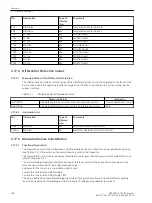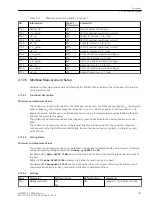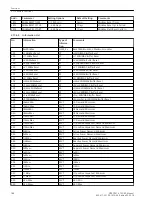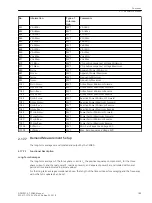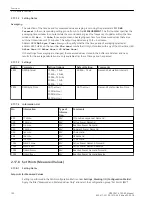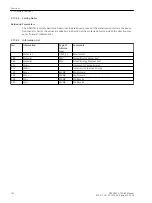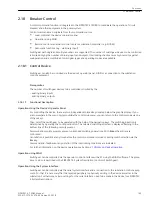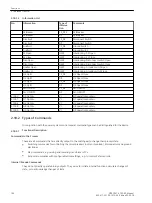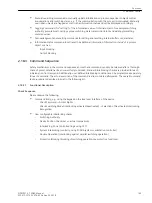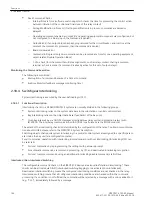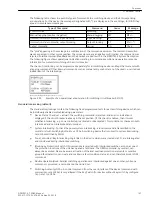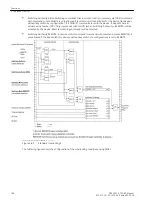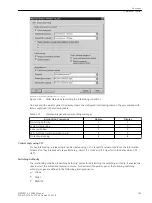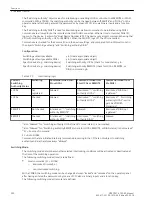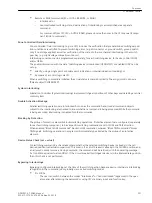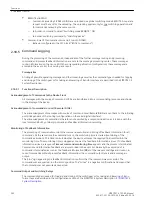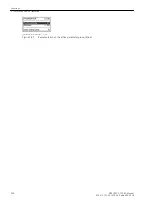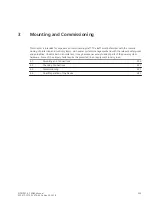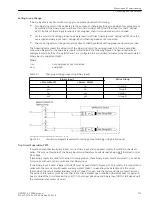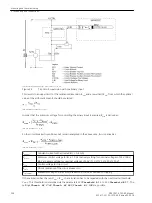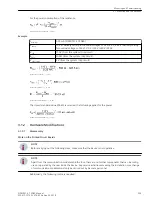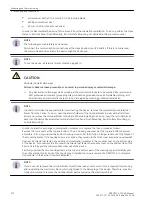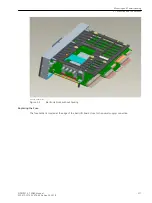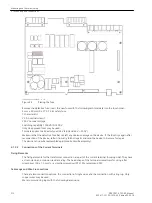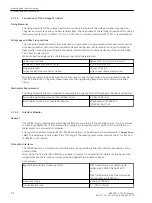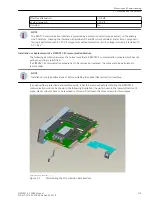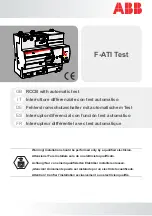
The "Switching authority" object serves for interlocking or enabling LOCAL control but not REMOTE or DIGSI
commands. With a 7SD80, the switching authority can be changed between "REMOTE" and "LOCAL" on the
operator panel after having entered the password or by means of CFC also via binary inputs and a function
key.
The "Switching authority DIGSI" is used for interlocking and allows commands to be initiated using DIGSI.
Commands are allowed for both a remote and a local DIGSI connection. When a (local or remote) DIGSI PC
logs on to the device, it enters its Virtual Device Number (VD). The device only accepts commands having that
VD (with switching authority = OFF or REMOTE). When the DIGSI PC logs off, the VD is cancelled.
Commands are checked for their source SC and the device settings, and compared to the information set in
the objects "Switching authority" and "Switching authority DIGSI".
Configuration
Switching authority available
y/n (create appropriate object)
Switching authority available DIGSI
y/n (create appropriate object)
Specific device (e.g. switching device)
Switching authority LOCAL (check for Local status): y/n
Specific device (e.g. switching device)
Switching authority REMOTE (check for LOCAL, REMOTE, or
DIGSI commands: y/n
Table 2-15
Interlocking logic
Current
Switching
Authority Status
Switching
Command Issued with
SC
3)
=LOCAL
Command Issued from
SC=LOCAL or REMOTE
Command issued from
SC=DIGSI
LOCAL
not
registered
Allowed
Interlocked
2)
- "switching
authority LOCAL"
Interlocked "DIGSI not
registered"
LOCAL
Checked
Allowed
Interlocked
2)
- "switching
authority LOCAL"
Interlocked
2)
- "switching
authority LOCAL" „verrie-
gelt, da VORORT–
Steuerung”
REMOTE
Not checked
Interlocked
1)
- "switching
authority REMOTE"
Allowed
Interlocked "DIGSI not
registered"
REMOTE
Checked
Interlocked
1)
- "switching
authority DIGSI"
Interlocked
2)
- "switching
authority DIGSI"
Allowed
1)
also "Allowed" for: ”switching authority LOCAL (check for Local status): is not marked
2)
also "Allowed" for: ”Switching authority REMOTE (check for LOCAL, REMOTE, or DIGSI status): is not marked"
3)
SC = Source of command
SC = Auto SICAM:
Commands that are initiated internally (command processing in the CFC) are not subject to switching
authority and are therefore always "allowed".
Switching Mode
The switching mode determines whether selected interlocking conditions will be activated or deactivated at
the time of the switching operation.
The following switching modes (local) are defined:
•
Local commands (SC = LOCAL)
–
interlocked (normal), or
–
non-interlocked switching.
With a 7SD80, the switching mode can be changed between "locked" and "unlocked" on the operator panel
after having entered the password or by means of CFC also via binary inputs and a function key.
The following switching modes (remote) are defined:
Functions
2.18 Breaker Control
200
SIPROTEC 4, 7SD80, Manual
E50417-G1100-C474-A2, Edition 02.2018
Summary of Contents for SIPROTEC 4 7SD80
Page 8: ...8 SIPROTEC 4 7SD80 Manual E50417 G1100 C474 A2 Edition 02 2018 ...
Page 10: ...10 SIPROTEC 4 7SD80 Manual E50417 G1100 C474 A2 Edition 02 2018 ...
Page 18: ...18 SIPROTEC 4 7SD80 Manual E50417 G1100 C474 A2 Edition 02 2018 ...
Page 248: ...248 SIPROTEC 4 7SD80 Manual E50417 G1100 C474 A2 Edition 02 2018 ...
Page 298: ...298 SIPROTEC 4 7SD80 Manual E50417 G1100 C474 A2 Edition 02 2018 ...
Page 312: ...312 SIPROTEC 4 7SD80 Manual E50417 G1100 C474 A2 Edition 02 2018 ...
Page 322: ...322 SIPROTEC 4 7SD80 Manual E50417 G1100 C474 A2 Edition 02 2018 ...
Page 400: ...400 SIPROTEC 4 7SD80 Manual E50417 G1100 C474 A2 Edition 02 2018 ...
Page 402: ...402 SIPROTEC 4 7SD80 Manual E50417 G1100 C474 A2 Edition 02 2018 ...

